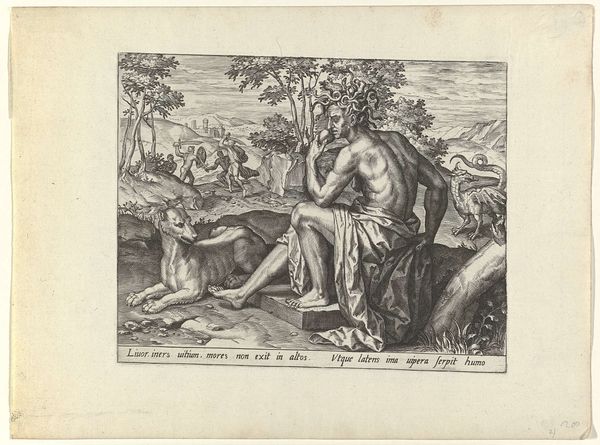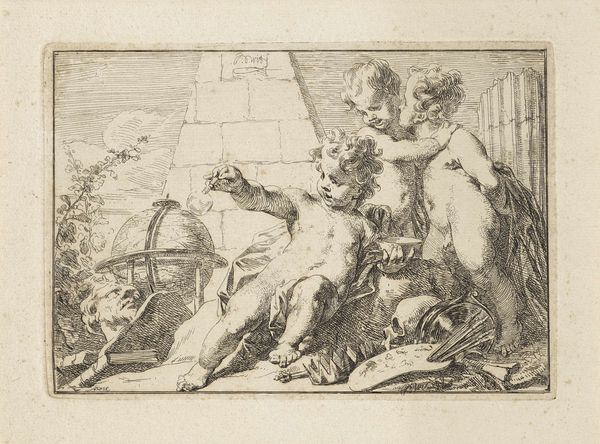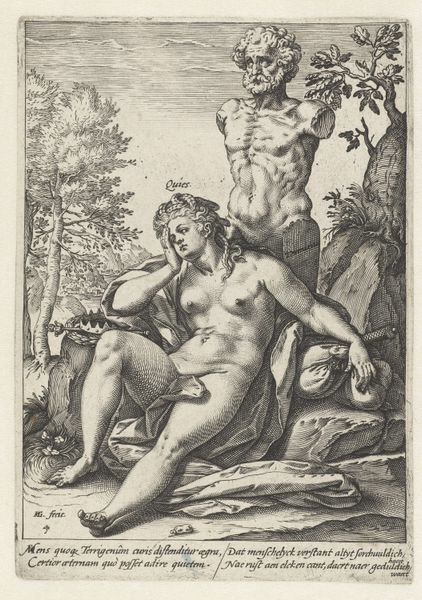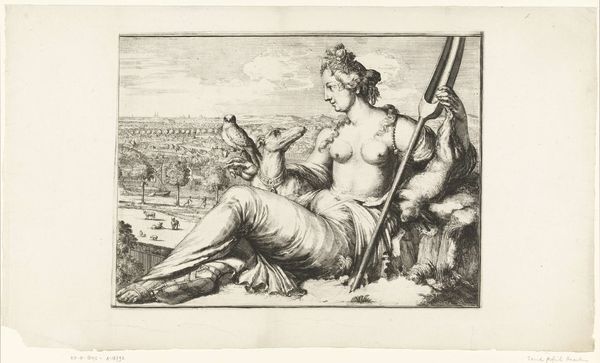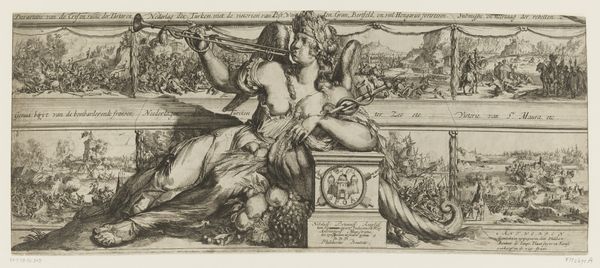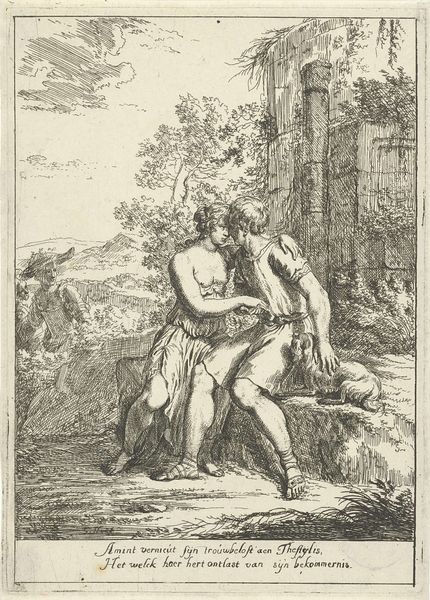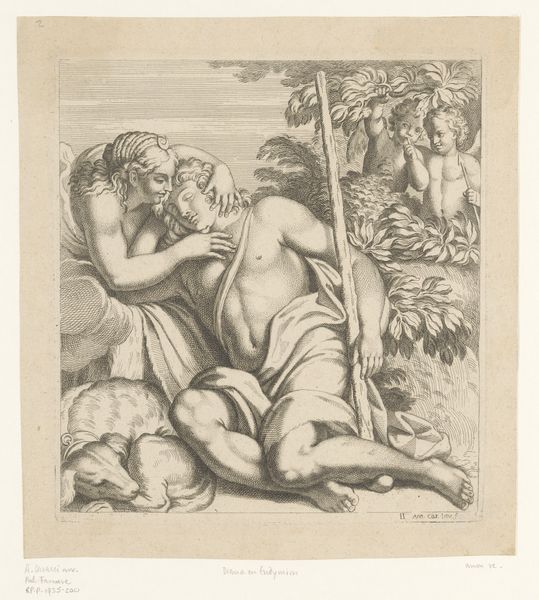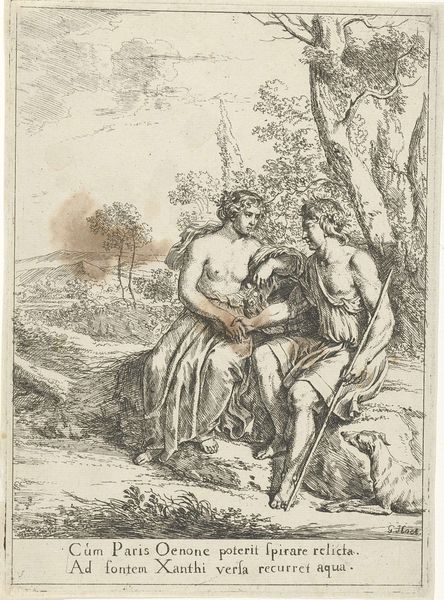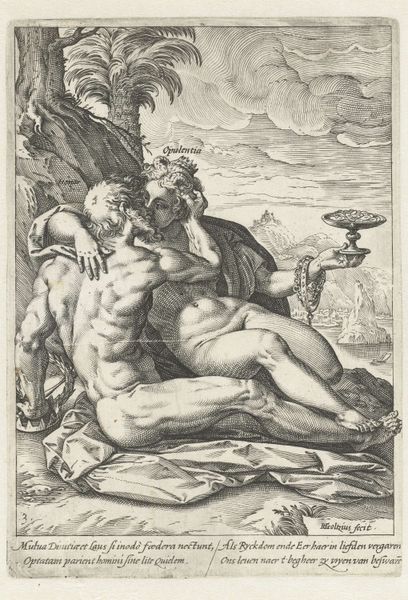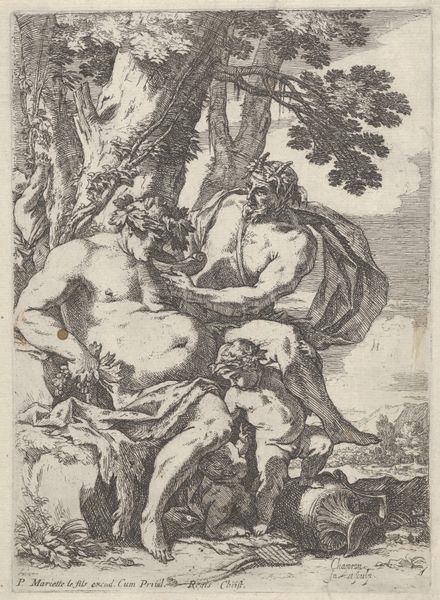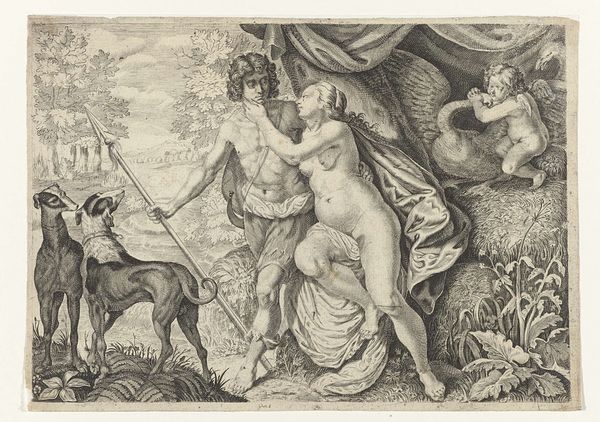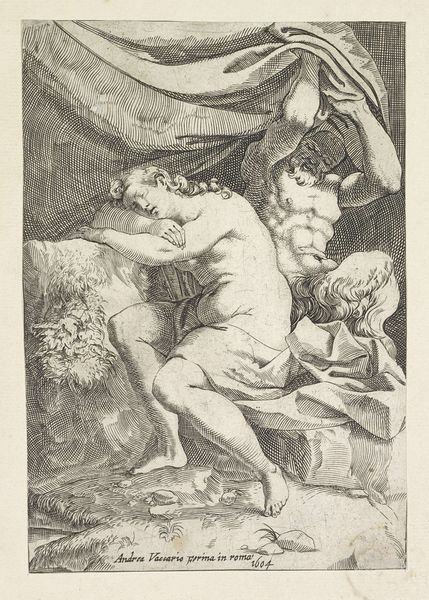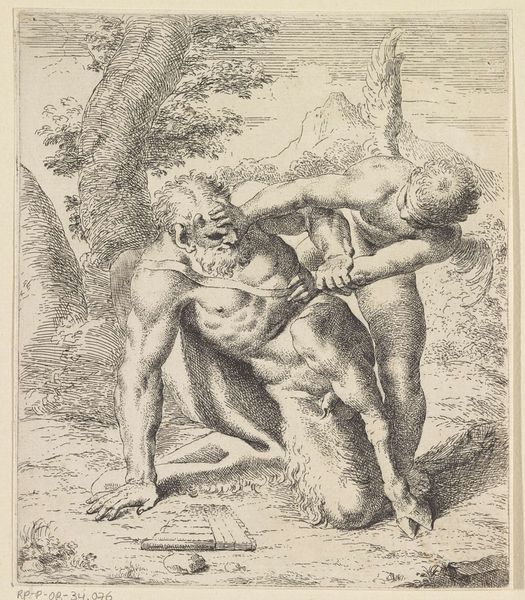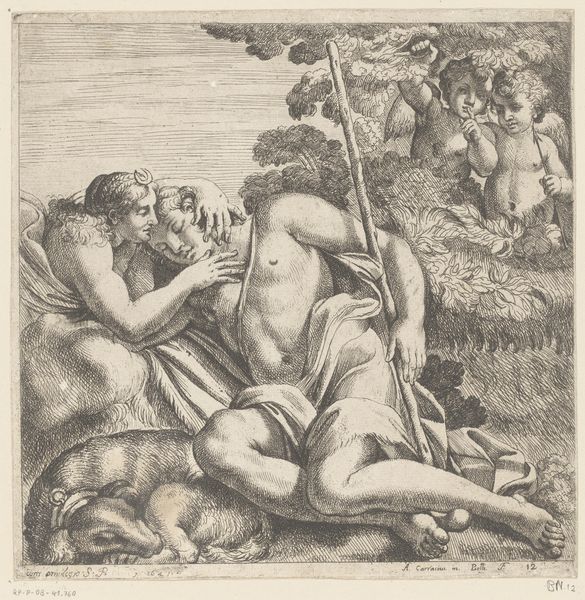
engraving
#
allegory
#
baroque
#
pen drawing
#
pen illustration
#
landscape
#
figuration
#
line
#
history-painting
#
engraving
Dimensions: height 262 mm, width 347 mm
Copyright: Rijks Museum: Open Domain
Romeyn de Hooghe made this print called "Mercurius" sometime between 1660 and 1700. De Hooghe lived during the Dutch Golden Age, a time of unprecedented economic growth and cultural flourishing for the Netherlands. Here, Mercurius, or Mercury, the Roman god of commerce, eloquence, and messages, reclines in the foreground, his winged helmet and caduceus – the staff entwined with snakes – are symbols of his swiftness and diplomatic skills. The city of Haarlem is depicted in the background, a subtle nod to the economic prosperity that the Dutch Republic was experiencing at the time. But this is no simple celebration of wealth; it's a complex portrayal of the societal values of the era. How did the accumulation of wealth affect the people? As a cultural figure, Mercurius embodies the duality of trade and communication, which facilitated the exchange of goods, and also ideas, influencing political and social change. De Hooghe seems to invite us to consider the implications of a society focused on mercantile success.
Comments
No comments
Be the first to comment and join the conversation on the ultimate creative platform.
